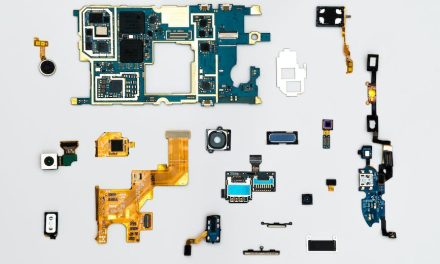Table of Contents
Unlocking the Power of Effective Communication
Introduction
A Comprehensive Guide to Productive 1:1 Discussions is a comprehensive resource that provides valuable insights and practical tips for conducting effective one-on-one discussions. This guide aims to help individuals enhance their communication skills and maximize the outcomes of these important conversations. Whether you are a manager, team leader, or simply looking to improve your interpersonal skills, this guide offers a step-by-step approach to planning, conducting, and following up on productive 1:1 discussions. By following the strategies outlined in this guide, you can foster open communication, build stronger relationships, and achieve better results in your professional and personal life.
The Importance of Preparation for 1:1 Discussions

A Comprehensive Guide to Productive 1:1 Discussions
In any professional setting, one-on-one discussions play a crucial role in fostering effective communication and building strong relationships between colleagues. Whether it’s a manager and employee, a mentor and mentee, or simply two colleagues collaborating on a project, these conversations provide an opportunity to exchange ideas, address concerns, and align goals. However, to ensure that these discussions are productive and yield positive outcomes, proper preparation is essential.
Preparation is the foundation of any successful 1:1 discussion. It allows both parties to come to the table with a clear understanding of the purpose and objectives of the conversation. Without adequate preparation, these discussions can easily become unstructured, unfocused, and ultimately unproductive.
One of the first steps in preparing for a 1:1 discussion is setting clear goals and objectives. This involves identifying the specific topics or issues that need to be addressed during the conversation. By clearly defining the purpose of the discussion, both parties can focus their efforts and ensure that the conversation remains on track.
Another important aspect of preparation is gathering relevant information. This may include reviewing previous conversations, performance metrics, or any other relevant data that can provide valuable context for the discussion. By having this information readily available, both parties can make informed decisions and contribute to a more meaningful conversation.
In addition to gathering information, it is also important to anticipate potential challenges or roadblocks that may arise during the discussion. This could involve identifying potential conflicts, addressing sensitive topics, or considering different perspectives. By anticipating these challenges, both parties can be better prepared to navigate them and find mutually beneficial solutions.
Furthermore, preparation should also involve setting a conducive environment for the discussion. This includes finding a suitable location, ensuring privacy, and minimizing distractions. By creating a comfortable and focused environment, both parties can engage in a more meaningful and productive conversation.
Lastly, it is important to establish a clear agenda for the discussion. This involves outlining the key points or topics that will be covered and allocating time for each. By having a structured agenda, both parties can stay on track and ensure that all important matters are addressed within the allotted time.
In conclusion, preparation is a critical component of productive 1:1 discussions. It sets the stage for a focused and meaningful conversation, allowing both parties to achieve their objectives and build stronger relationships. By setting clear goals, gathering relevant information, anticipating challenges, creating a conducive environment, and establishing a clear agenda, both parties can maximize the value of their 1:1 discussions. So, the next time you have a 1:1 discussion on your calendar, take the time to prepare. You’ll be amazed at the positive impact it can have on the outcome of the conversation.
Effective Communication Strategies for Productive 1:1 Discussions
A Comprehensive Guide to Productive 1:1 Discussions
Effective Communication Strategies for Productive 1:1 Discussions
In today’s fast-paced and interconnected world, effective communication is more important than ever. Whether you are a manager, team leader, or simply an individual looking to improve your interpersonal skills, mastering the art of productive 1:1 discussions is essential. These one-on-one conversations provide an opportunity to build relationships, address concerns, and foster collaboration. In this comprehensive guide, we will explore some effective communication strategies that can help you make the most out of your 1:1 discussions.
First and foremost, it is crucial to establish a positive and open atmosphere for the conversation. Begin by setting the tone with a warm greeting and a genuine interest in the other person’s well-being. This simple act of kindness can go a long way in creating a safe space for open and honest dialogue. Additionally, be mindful of your body language and non-verbal cues. Maintain eye contact, nod in agreement, and use appropriate facial expressions to show that you are actively listening.
Active listening is a fundamental skill that can greatly enhance the quality of your 1:1 discussions. It involves not only hearing the words being spoken but also understanding the underlying emotions and intentions. Practice active listening by paraphrasing and summarizing the other person’s points to ensure that you have understood them correctly. This not only demonstrates your attentiveness but also allows for clarification and deeper understanding.
Another important aspect of productive 1:1 discussions is asking open-ended questions. These questions encourage the other person to share their thoughts, feelings, and ideas in a more detailed and meaningful way. Avoid closed-ended questions that can be answered with a simple “yes” or “no.” Instead, ask questions that begin with “how,” “what,” or “why” to encourage a more in-depth conversation. This will not only help you gather valuable information but also show that you value the other person’s input.
In addition to asking open-ended questions, it is equally important to provide constructive feedback during 1:1 discussions. Feedback should be specific, timely, and focused on behavior rather than personal attributes. Use the “sandwich” approach by starting with a positive comment, followed by the area for improvement, and ending with another positive comment. This approach helps to balance criticism with encouragement and maintains a constructive and supportive atmosphere.
Furthermore, effective communication in 1:1 discussions involves being aware of and managing emotions. Emotions can greatly influence the outcome of a conversation, so it is important to remain calm and composed. If you find yourself becoming emotional, take a moment to collect your thoughts and regain your composure before continuing the discussion. Similarly, if the other person becomes emotional, practice empathy and understanding. Validate their feelings and provide a safe space for them to express themselves.
Lastly, it is essential to follow up on the outcomes and action items discussed during the 1:1 discussion. This demonstrates your commitment to the conversation and ensures that progress is made. Send a follow-up email summarizing the key points discussed, any decisions made, and the agreed-upon action steps. This not only serves as a reminder but also holds both parties accountable for their commitments.
In conclusion, productive 1:1 discussions are a vital component of effective communication. By establishing a positive atmosphere, practicing active listening, asking open-ended questions, providing constructive feedback, managing emotions, and following up on action items, you can enhance the quality and outcomes of your 1:1 discussions. Remember, effective communication is a skill that can be developed and refined over time, so keep practicing and honing your abilities.
Building Trust and Rapport in 1:1 Discussions
A Comprehensive Guide to Productive 1:1 Discussions
Building Trust and Rapport in 1:1 Discussions
In any professional setting, effective communication is key to success. One of the most important forms of communication is the one-on-one discussion. Whether it’s a meeting with a colleague, a performance review with a supervisor, or a coaching session with a team member, these conversations play a crucial role in building trust and rapport.
Building trust is the foundation of any successful relationship, and it is no different in the workplace. When trust is established, individuals feel more comfortable sharing their thoughts, ideas, and concerns. This open and honest communication leads to better problem-solving, increased collaboration, and improved overall performance.
So, how can you build trust and rapport in your one-on-one discussions? The first step is to create a safe and supportive environment. Make sure the conversation takes place in a private and quiet space where both parties can feel comfortable and free to express themselves. This will help foster a sense of trust and confidentiality.
Active listening is another crucial aspect of building trust and rapport. Show genuine interest in what the other person is saying by maintaining eye contact, nodding, and using verbal cues such as “I see” or “I understand.” Avoid interrupting or jumping to conclusions. Instead, ask open-ended questions to encourage the other person to share more and clarify their thoughts.
Empathy is also essential in building trust and rapport. Put yourself in the other person’s shoes and try to understand their perspective. Acknowledge their feelings and validate their experiences. This will show that you value their opinions and are willing to consider their point of view.
Another way to build trust and rapport is through transparency and honesty. Be open about your intentions and expectations for the conversation. Clearly communicate your goals and objectives, and be honest about any challenges or concerns you may have. This will help establish a sense of trust and credibility.
In addition to building trust, it is important to establish rapport in your one-on-one discussions. Rapport refers to the connection and understanding between individuals. When rapport is present, conversations flow more smoothly, and individuals feel more comfortable sharing their thoughts and ideas.
To establish rapport, it is important to find common ground with the other person. Look for shared interests, experiences, or values that you can connect on. This will help create a sense of camaraderie and mutual understanding.
Building rapport also involves being mindful of non-verbal communication. Pay attention to your body language, tone of voice, and facial expressions. Maintain a relaxed and open posture, speak in a friendly and respectful tone, and smile genuinely. These non-verbal cues will help create a positive and welcoming atmosphere.
Lastly, building rapport requires building a relationship over time. Take the time to get to know the other person on a personal level. Show genuine interest in their lives, ask about their hobbies or interests, and remember important details about them. This will help create a sense of connection and trust that goes beyond the professional setting.
In conclusion, building trust and rapport in one-on-one discussions is crucial for effective communication in the workplace. By creating a safe and supportive environment, practicing active listening and empathy, being transparent and honest, finding common ground, being mindful of non-verbal communication, and building a relationship over time, you can establish trust and rapport that will lead to more productive and meaningful conversations.
Overcoming Challenges in 1:1 Discussions
Overcoming Challenges in 1:1 Discussions
One-on-one discussions are an essential part of effective communication in various settings, including the workplace, educational institutions, and personal relationships. However, these discussions can sometimes be challenging, as they require individuals to navigate through potential obstacles to ensure productive outcomes. In this section, we will explore some common challenges that arise during 1:1 discussions and provide strategies to overcome them.
One of the most prevalent challenges in 1:1 discussions is poor listening skills. Often, individuals are so focused on expressing their own thoughts and opinions that they fail to actively listen to the other person. This can lead to misunderstandings, miscommunication, and a lack of empathy. To overcome this challenge, it is crucial to practice active listening. This involves giving the speaker your full attention, maintaining eye contact, and avoiding distractions. Additionally, paraphrasing and summarizing the speaker’s points can help ensure that you have understood their message correctly.
Another challenge that frequently arises in 1:1 discussions is the presence of biases and preconceived notions. These biases can hinder open and honest communication, as they may lead individuals to make assumptions or judgments about the other person’s perspective. To overcome this challenge, it is important to be aware of your own biases and actively work to suspend judgment. This can be achieved by adopting a curious mindset and asking open-ended questions to gain a deeper understanding of the other person’s thoughts and feelings.
Conflict is another common challenge that can arise during 1:1 discussions. Disagreements and differing opinions are natural, but if not managed effectively, they can escalate and hinder productive communication. To overcome this challenge, it is crucial to approach conflicts with a collaborative mindset. This involves actively seeking common ground, focusing on shared goals, and practicing empathy. By acknowledging and validating the other person’s perspective, you can create an environment that encourages open dialogue and problem-solving.
Power dynamics can also pose a challenge in 1:1 discussions, particularly in professional settings. When one person holds a position of authority or has more experience, it can create a power imbalance that inhibits open and honest communication. To overcome this challenge, it is important to create a safe and inclusive environment where both parties feel comfortable expressing their thoughts and concerns. This can be achieved by actively encouraging the other person’s input, practicing active listening, and ensuring equal participation.
Lastly, time constraints can be a significant challenge in 1:1 discussions. With busy schedules and competing priorities, it can be difficult to allocate sufficient time for meaningful conversations. To overcome this challenge, it is important to prioritize and schedule dedicated time for 1:1 discussions. Setting clear objectives and agendas beforehand can help ensure that the conversation remains focused and productive. Additionally, being mindful of time and actively managing the discussion can help prevent it from veering off track.
In conclusion, 1:1 discussions can be challenging, but with the right strategies, these challenges can be overcome. By practicing active listening, suspending judgment, managing conflicts collaboratively, addressing power dynamics, and prioritizing time, individuals can navigate through these obstacles and ensure productive outcomes. Effective 1:1 discussions are essential for building strong relationships, fostering understanding, and achieving shared goals.
Q&A
1. What is “A Comprehensive Guide to Productive 1:1 Discussions”?
It is a guide that provides strategies and tips for conducting effective one-on-one discussions.
2. Who is the target audience for this guide?
The guide is aimed at individuals who want to improve their skills in conducting productive one-on-one discussions.
3. What topics are covered in the guide?
The guide covers various topics such as setting goals for the discussion, active listening techniques, asking effective questions, providing constructive feedback, and resolving conflicts.
4. Where can one find “A Comprehensive Guide to Productive 1:1 Discussions”?
The guide can be found online on various platforms, such as websites, blogs, or downloadable PDFs.
Conclusion
In conclusion, “A Comprehensive Guide to Productive 1:1 Discussions” provides valuable insights and strategies for conducting effective one-on-one conversations. It emphasizes the importance of preparation, active listening, and creating a safe and open environment for meaningful dialogue. The guide offers practical tips and techniques to enhance communication skills and foster productive outcomes in various professional and personal settings. By following the principles outlined in this guide, individuals can improve their ability to engage in constructive and impactful one-on-one discussions.




